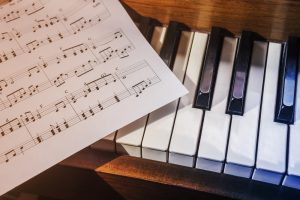Table of Contents
Come join us now, and enjoy playing your beloved music and browse through great scores of every level and styles!
Can’t find the songbook you’re looking for? Please, email us at: sheetmusiclibrarypdf@gmail.com We’d like to help you!
Sorabji: In the Hothouse (from Two Piano Pieces) sheet music, Noten, partitura, spartiti 楽譜

Best Sheet Music download from our Library.
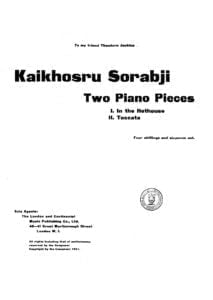
Please, subscribe to our Library.
If you are already a subscriber, please, check our NEW SCORES’ page every month for new sheet music. THANK YOU!
Browse in the Library:
Or browse in the categories menus & download the Library Catalog PDF:
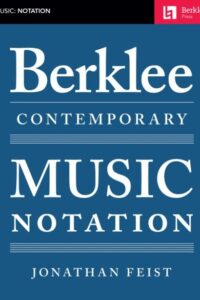
Who was Sorabji?
Kaikhosru Shapurji Sorabji: The Hermit of Modernist Maximalism
In the often-crowded pantheon of 20th-century composers, Kaikhosru Shapurji Sorabji (1892-1988) occupies a unique and enigmatic niche. A composer of staggering ambition, labyrinthine complexity, and self-imposed isolation, Sorabji crafted some of the most monumental, technically demanding, and stylistically idiosyncratic music ever conceived. His work, largely ignored during his lifetime and still challenging audiences today, represents a singular path through modernism – one defined by maximalism, intricate ornamentation, transcendental virtuosity, and a fierce, almost hermetic, independence.

Biography: A Self-Forged Identity
- Birth & Heritage: Born Leon Dudley Sorabji on August 14, 1892, in Chingford, Essex, England. His father was a Parsi engineer from India (thus the Persian-derived name Sorabji), and his mother was English-Spanish. This mixed heritage profoundly shaped his sense of identity, though he felt alienated from both cultures.
- The Name: Around 1914, he legally changed his name to Kaikhosru Shapurji Sorabji. “Kaikhosru” and “Shapurji” were Persian names chosen for their resonance and connection to ancient Persian history and Zoroastrianism, reflecting his deliberate construction of a unique persona.
- Musical Formation: Largely self-taught. He received some piano lessons in his youth but had no formal composition training. His musical education came through voracious listening, score study (especially Bach, Liszt, Busoni, Debussy, Ravel, Scriabin, Szymanowski, Medtner), and wide reading in literature, philosophy, and the occult.
- Early Career & Criticism: Worked as a music critic (under the pseudonym “S. Godfrey”) for outlets like The New Age and The New English Weekly from the 1910s to the 1930s. His critiques were famously acerbic, insightful, and often scathing, particularly targeting English musical provincialism and composers he deemed mediocre (which was most of them).
- The Recluse: Deeply disillusioned by the musical establishment and critical reception to his early performances (which were rare and often controversial), Sorabji gradually withdrew from public musical life starting in the late 1930s. After his mother’s death in 1940, he retreated almost completely to his secluded home “The Eye” in Corfe Castle, Dorset, where he lived with his companion, Reginald Norman Best, until his death. He forbade performances of his music for decades.
- The Ban Lifted: In 1976, pressured by a growing underground interest spearheaded by pianists like Yonty Solomon and Alistair Hinton (who later became his literary executor), Sorabji reluctantly lifted the ban on performances, provided he approved the performer.
- Death: Sorabji died on October 15, 1988, in Winfrith Newburgh, Dorset, leaving behind a colossal legacy of unpublished manuscripts.
Works: Monuments of Sound

Sorabji’s output is vast and overwhelmingly dominated by solo piano music, though he also composed orchestral works, chamber music, organ symphonies, and songs. His works are renowned for their extreme length, density, and technical difficulty, pushing the boundaries of playability.
- Key Masterpieces:
- Opus Clavicembalisticum (1930): His most famous (or infamous) work. A colossal 4+ hour piano epic in 12 movements (including fugues, passacaglias, toccatas, cadenzas), often considered one of the most challenging solo piano works ever written. A summit of contrapuntal complexity and virtuosic display.
- Symphonic Variations for Piano (1935-37): Another monumental work, exploring vast variation forms over an extended duration.
- Sequentia Cyclica super “Dies iræ” ex Missa pro Defunctis (1948-49): A massive cycle of 27 variations on the “Dies Irae” chant, demonstrating his intricate contrapuntal and transformative skills.
- 100 Transcendental Studies (1940-44): True to their name, these studies explore extreme technical and expressive demands far beyond those of Liszt or Chopin.
- Symphonies for Solo Piano: Several exist, including his Symphony No. 2 (“Jāmī”), blending orchestral textures and scope onto the piano.
- Gulistān – Nocturne for Piano (1940): A prime example of his lush, perfumed, and incredibly intricate “Persian”-inspired style.
- Concerti: He wrote several for solo piano and orchestra (e.g., Concerto per suonare da me solo e senza orchestra, per divertirsi), which are symphonic in scale and require superhuman virtuosity.
- Symphonies for Organ: Vast, complex works exploring the sonic possibilities of the instrument.
Analysis of Style: A Universe of Complexity
Sorabji’s style is instantly recognizable yet difficult to categorize. It synthesizes diverse elements into a unique and overwhelming whole:
- Maximalism: This is the defining characteristic. Sorabji embraced extremes:
- Length: Works lasting several hours are common.
- Density: Highly polyphonic textures, often with multiple independent melodic lines woven together in complex counterpoint (influenced by Bach, Busoni).
- Virtuosity: Demands transcendental technique – cascades of notes, complex polyrhythms, wide leaps, immense power, and extreme delicacy. He wrote as if the pianist had four hands.
- Ornamentation: Baroque-like ornamentation (trills, mordents, turns, grace notes) is ubiquitous, often layered and integral to the texture, creating shimmering, kaleidoscopic surfaces (influenced by Scriabin, Szymanowski, Middle Eastern/Persian music).
- Dynamic Range: From barely audible whispers to thunderous, percussive climaxes.
- Harmony: A complex fusion:
- Rooted in late-Romantic chromaticism (Scriabin, Szymanowski, early Schoenberg).
- Freely employed dissonance, clusters, and intricate chord structures.
- Often retained a sense of tonal centers or polarity, even amidst dense chromaticism (unlike strict atonality).
- Incorporated modal inflections, sometimes evoking Persian or Spanish flavors.
- Rhythm: Highly complex and fluid:
- Frequent use of polyrhythms (multiple simultaneous rhythms), cross-rhythms, and nested tuplets (triplets within quintuplets, etc.).
- Tempo often fluctuates wildly, requiring immense control.
- A sense of improvisatory freedom within highly structured forms.
- Form: Often large-scale, complex, and idiosyncratic:
- Favored variations (passacaglias, chaconnes), fugues, toccatas, and intricate multi-movement structures (like the Opus Clavicembalisticum).
- Forms were often expansive and cumulative, building through layered repetition and intensification rather than traditional development.
- Architecture was paramount, even in the densest textures.
- Influences (Assimilated, Not Imitated):
- Ferruccio Busoni: The most profound influence. Busoni’s ideas of “Young Classicism,” the transcendental potential of the piano, the fusion of Bachian counterpoint with modern harmony, and the concept of “Junge Klassizität” resonated deeply. Sorabji dedicated his Opus Clavicembalisticum to Busoni’s memory.
- Franz Liszt: Virtuosity, thematic transformation, large-scale forms, and the symphonic poem concept translated to piano.
- J.S. Bach: Contrapuntal mastery, structural rigor, and the use of forms like fugue and passacaglia.
- Alexander Scriabin: Mysticism, harmonic language, dense textures, and ecstatic climaxes.
- Karol Szymanowski: Sensuous harmony, intricate ornamentation (especially in the “Persian” inspired works like Métopes and Masques), and voluptuous textures.
- Debussy & Ravel: Color, texture, exoticism, and pianistic refinement.
- Mediterranean & Persian Cultures: While not authentically recreating these styles, he evoked their essence through ornamentation, melodic turns, and titles (Gulistān, Jāmī), reflecting his fascination with his Persian heritage and the wider Orient.
- Aesthetic: Sorabji’s music aimed for:
- Transcendence: Pushing beyond perceived limits of instrument, performer, and listener.
- Luxuriance & Opulence: A rich, sensual, almost decadent sound world.
- Intellectual Rigor: Underlying the sensual surface was meticulous structural planning.
- Individualism: A complete rejection of prevailing trends (serialism, neoclassicism, minimalism) in favor of his own uncompromising vision.
Legacy: From Obscurity to Cult Status
Sorabji’s legacy is complex and evolving:
- Decades of Neglect: His self-imposed exile and performance ban meant his music was virtually unknown outside a tiny circle for nearly 40 years. Manuscripts were inaccessible, unplayable, and unpublished.
- The Pioneers (1970s-): The lifting of the ban sparked interest. Pianists like Yonty Solomon, Michael Habermann, Geoffrey Douglas Madge (who made the first complete recording of Opus Clavicembalisticum in 1977), and later Marc-André Hamelin, Jonathan Powell, Fredrik Ullén, and Ronald Stevenson began the monumental task of learning, performing, and recording his works. This required immense dedication and technical prowess.
- Publication & Scholarship: The Sorabji Archive, established by Alistair Hinton (Sorabji’s literary executor), has been crucial in cataloging, editing, and facilitating the publication of scores (primarily by Dover Publications and The Sorabji Music Archive). Scholarly work is gradually increasing.
- Recordings Renaissance: The CD era and digital distribution (YouTube, streaming) have been transformative. Dedicated labels (Altarus, BIS, Toccata Classics, Piano Classics) have released numerous recordings, making this once-inaccessible music available globally. Complete cycles of the 100 Studies and other major works are underway.
- The Cult & The Challenge: Sorabji remains a “composer’s composer” and a cult figure. His music is not mainstream concert fare due to its extreme demands and duration. However, it commands deep respect and fascination among pianists, composers, and listeners drawn to its unique sound world and uncompromising vision. He is seen as the ultimate iconoclast, forging a path utterly independent of 20th-century musical fashions.
- Influence: His direct influence on other composers is hard to pinpoint due to his obscurity, but he stands as a powerful symbol of uncompromising artistic integrity and the exploration of extreme complexity and virtuosity. Composers interested in maximalism, intricate counterpoint, or pushing pianistic limits inevitably encounter his shadow.
- Copyright Controversy: The complex copyright status of his works (involving the Sorabji Archive and publishers) has sometimes been a point of friction within the community of performers and scholars seeking access.
Sorabji: The Solitary Giant
Kaikhosru Shapurji Sorabji was a true original. He inhabited a musical universe entirely of his own making, synthesizing diverse influences into a style characterized by unparalleled complexity, sensuous opulence, and transcendental ambition. His deliberate withdrawal from the world ensured decades of obscurity, but the dedication of pioneering performers and the power of recording technology have brought his extraordinary soundscapes to light. While his music remains challenging and demanding, it offers unparalleled rewards: a journey into a world of labyrinthine beauty, overwhelming power, and intellectual fascination. Sorabji stands as a testament to the power of an utterly individual artistic vision, uncompromising in its scope and ambition, a solitary giant whose monumental creations continue to challenge and inspire. He redefined the possible for the piano and left a legacy that continues to unfold as more performers dare to scale his musical Himalayas.
“In the Hothouse” is one of Sorabji’s most evocative and frequently performed works, serving as a perfect entry point into his dense, sensuous sound world. Here’s a detailed look at this fascinating piece:
Context: Two Piano Pieces (1918)
- Composed: 1918 (early in Sorabji’s career, age 26).
- Publication: First published in 1920, making it one of the earliest Sorabji works available in print.
- The Pair: “In the Hothouse” is paired with “Toccata” – a contrasting, hyper-virtuosic, and structurally complex piece showing his Busoni/Liszt influences. “In the Hothouse” offers the sensual, atmospheric counterpoint.
- Significance: Represents Sorabji’s early mastery of texture, harmony, and evocative atmosphere. It predates his gargantuan works but already displays his unique voice.
“In the Hothouse”: A Sensory Immersion
- Title & Imagery: The title instantly conjures an environment: humid, lush, teeming with exotic, overripe plant life, heavy perfumes, and stifling, enclosed heat. Sorabji translates this sensory overload into sound.
- Form & Structure: Relatively free and rhapsodic. It unfolds as a continuous, organic stream of consciousness rather than adhering to strict classical forms. Think of it as an elaborate, decadent arabesque.
- Style & Character:
- Extreme Sensuality: This is the defining feature. The music drips with lush, complex harmonies and suffocatingly rich textures.
- Harmony: Deeply chromatic, rooted in late Scriabin and early Szymanowski. Expect dense, constantly shifting chords: augmented harmonies, whole-tone inflections, unresolved dissonances creating tension, and sudden moments of surprising consonance like shafts of light piercing foliage. It avoids traditional tonality but gravitates around implied centers.
- Texture: Thick, layered, and constantly in motion. Tremolos, trills, rapid filigree (ornamental passages), and cascading arpeggios create a shimmering, humid haze. Melodies are often embedded within this dense undergrowth rather than standing clearly apart. The writing often requires the pianist to sustain multiple layers simultaneously.
- Rhythm: Fluid and flexible, often obscured by the sheer density of notes and ornamentation. Rubato (expressive tempo fluctuations) is essential. While less overtly complex polyrhythmically than his later works, the rhythmic flow feels organic and improvisatory.
- Dynamics & Articulation: Wide dynamic range, often shifting suddenly between extremes (e.g., thunderous climaxes collapsing into fragile whispers). Articulation varies from sharp staccatos to legatissimo passages that blur together. Pedaling is crucial for sustaining the harmonic haze and creating resonance.
- Ornamentation: Quintessential early Sorabji. Trills, mordents, turns, and grace notes are not mere decoration; they are the texture, creating constant flickering movement and contributing to the claustrophobic, teeming atmosphere. This foreshadows the intricate ornamentation dominating his mature style.
- Emotional Landscape: Evokes opulence, decadence, languor, mystery, stifling heat, hidden dangers, and overwhelming sensory stimulation. There’s a sense of beauty bordering on the grotesque due to its sheer intensity.
Influences Audible in “In the Hothouse”
- Scriabin (Primary): The harmonic language (mystic chords, unresolved dissonance, ecstatic climaxes), the sensual atmosphere, and the use of trills/tremolos are deeply indebted to Scriabin’s late sonatas and poems (e.g., Vers la flamme). Sorabji pushes Scriabin’s decadence further.
- Szymanowski: The opulent textures, perfumed harmonies, and “orientalist” exoticism (though abstracted here) strongly recall Szymanowski’s “Métopes” or “Masques,” which Sorabji admired deeply.
- Debussy: The focus on atmosphere, texture, and harmonic color (whole-tone scales, parallel chords) shows Debussy’s influence, though rendered with far greater density and intensity.
- Ravel: The virtuosic filigree and lush harmonies (think “Gaspard de la Nuit,” especially “Ondine” or “Le gibet”) are a touchstone, again amplified.
- Liszt: The rhapsodic freedom and dramatic gestures hint at Liszt, though filtered through a post-Scriabinesque lens.
Performance Challenges
- Texture & Balance: Maintaining clarity amidst the dense, rapidly shifting textures is paramount. The pianist must carefully voice chords and layers to prevent muddiness while sustaining the essential harmonic haze.
- Ornamentation as Texture: Executing the constant ornamentation smoothly and evenly, integrating it into the melodic and harmonic flow rather than treating it as mere decoration.
- Dynamic Control: Navigating the extreme dynamic contrasts and sudden shifts without sounding jarring. Creating a true pianissimo shimmer within complexity is incredibly difficult.
- Rubato & Phrasing: Applying expressive tempo fluctuations naturally while maintaining the overall structural coherence and forward momentum of the rhapsodic form.
- Pedaling: Using the pedal to create resonance and blend without causing harmonic blurring or loss of rhythmic definition. Requires exceptional sensitivity.
- Stamina & Focus: While shorter than his later works (typically 12-15 minutes), the piece demands intense concentration and physical control to sustain the atmosphere and navigate the technical intricacies.
Legacy & Significance of “In the Hothouse”
- Accessibility: It remains one of Sorabji’s most “accessible” works due to its evocative title, relatively shorter duration, and concentrated expression. It’s a frequent choice for pianists introducing audiences to Sorabji.
- Blueprint: It serves as a crucial blueprint for Sorabji’s mature style, showcasing his core preoccupations: sensuality, harmonic density, intricate ornamentation as texture, and atmospheric evocation, all present in embryonic form.
- Performance History: Despite Sorabji’s later ban, “In the Hothouse” (along with the Toccata) was one of the few pieces occasionally performed during his lifetime (e.g., by Sorabji himself and pianist Reginald Paul) and became a key work for the pioneering generation post-1976 (Yonty Solomon, Michael Habermann, Marc-André Hamelin, Jonathan Powell, Fredrik Ullén).
- Gateway Piece: It functions as a vital “gateway drug” into Sorabji’s world. Its success in conveying its intense atmosphere often encourages listeners to explore his more monumental, complex works.
- Standalone Masterpiece: Regardless of its role as an introduction, it stands as a perfectly formed and powerful piece of early modernist piano writing, a miniature tone poem of extraordinary evocative power.
“In the Hothouse” is a sun-drenched, overripe, and intoxicating immersion into Sorabji’s unique aesthetic. It captures the essence of his sensual maximalism in a concentrated dose, showcasing his debt to Scriabin and Szymanowski while asserting his own distinct voice. Its evocative power, technical brilliance, and relative brevity ensure its enduring place as one of his most beloved and frequently performed works, offering a compelling glimpse into the hothouse of Sorabji’s extraordinary musical imagination.
| Artist or Composer / Score name | Cover | List of Contents |
|---|---|---|
| Dan Coates Late 80s History Of Rock Piano Vocal Guitar |
 |
Dan Coates Late 80s History Of Rock Piano Vocal Guitar |
| Dan Coates Music For All Occasions Complete Advanced Piano Solos |
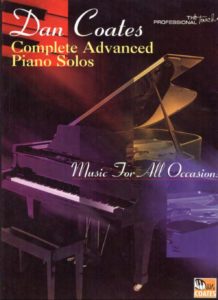 |
Dan Coates Music For All Occasions Complete Advanced Piano Solos |
| Dan Coates Popular Piano Solos Intermediate Advanced |
 |
Dan Coates Popular Piano Solos Intermediate Advanced |
| Dan Coates The Lord Of The Rings by Howard Shore Easy Piano Book |
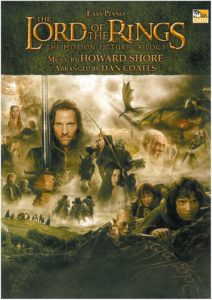 |
Dan Coates The Lord Of The Rings Easy Piano Book |
| Dan Coates The Professional Pianist Best Of The 70s And 80s Piano Solos |
 |
Dan Coates The Professional Pianist Best Of The 70s And 80s |
| Dan Forrest Hosanna (from Words from Paradise) SATB Piano |
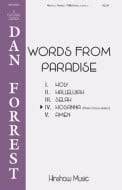 |
|
| Dan Forrest Requiem for the Living (SATB with piano, orchestra or chamber ensemble) |
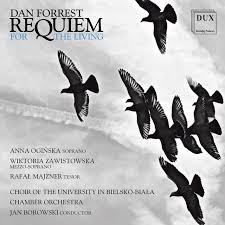 |
|
| Dan Haerle – Accords Jazz Rock Pour Le Pianiste Contemporain (French, français) |
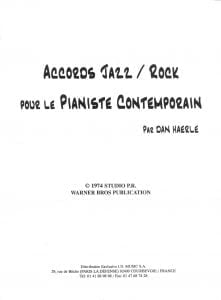 |
|
| Dan Haerle – Jazz Improvisation For Keyboard Players Basic Concepts Book One |
 |
Dan Haerle – Jazz Improvisation For Keyboard Players Basic Concepts Book One |
| Dan Haerle – Jazz Rock Voicings for the Contemporary Keyboard Player |
 |
|
| Dan Haerle -The Jazz Language – A Theory Text for Jazz Composition and Improvisation |
 |
|
| Dan Haerle Gammes Jazz Pour l’Improvisation de Jazz (Français – French) |
 |
Dan Haerle Gammes Jazz Pour l’Improvisation de Jazz (Français – French) |
| Dan Haerle Jazz piano voicing skills |
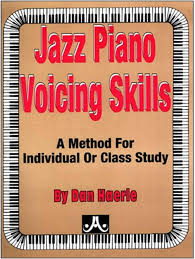 |
|
| Dan Haerle Scales For Jazz Improvisation for all instruments |
 |
|
| Dan Maske – Progressive Rock Keyboard |
 |
Dan Maske – Progressive Rock Keyboard |
| Dan Shaw Jazzopédie An improvisation of Satie Gymnopedie no. 1 |
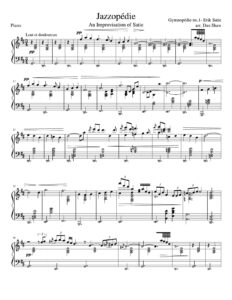 |
|
| Dan Shaw Palpitations Piano Solo sheet music |
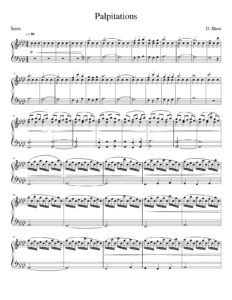 |
|
| Dance (Yiruma) | ||
| Dance for me Wallis – W.E. OST (Abel Korzeniowski) | ||
| Dance with mandolins – Romeo and Juliet (Sergej Prokofiev) | ||
| Dancing (Elisa) | ||
| Dancing Queen – Abba Piano Solo (Musescore file).mscz | Musescore File | |
| Dancing with the bear – easier version (Finding Neverland OST) | ||
| Dancing with the bear (Finding Neverland OST) Jan A.P | ||
| Daniel Bedingfield – If Youre Not The One | ||
| Daniel Cantor – Night Of Silence for Voice and Piano accompaniement from Contre Jour |
 |
|
| Daniel Gilbert Guitar Soloing Contemporary Guide to Improvisation Book + Audio Mp3 Tracks To Play Along pdf |
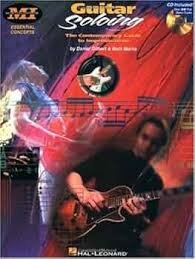 |
|
| Daniel Kramer 14 Etudes In Jazz Style |
 |
|
| Daniel Kramer Gold Jazz Themes |
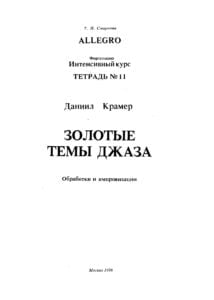 |
|
| Daniel Licht Dexter Photo Albums Music PIANO SOLO | Daniel Licht Dexter Photo Albums Music PIANO SOLO | |
| Daniel Licht – Dexter – Photo Albums – Sheet Music | Daniel Licht – Dexter – Photo Albums – Sheet Music | |
| Daniel Licht Astor’s Birthday Party (Piano Solo) | Daniel Licht Dexter Astor’s Birthday Party piano solo | |
| Daniel Licht Dexter Astor’s Birthday Party piano solo | Daniel Licht Dexter Astor’s Birthday Party piano solo | |
| Daniel Licht Dexter Blood Theme Piano Solo Sheet Music |
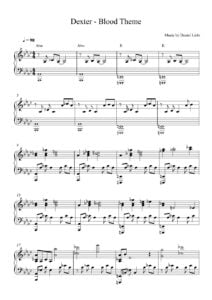 |
Daniel Licht Dexter Blood Theme |
| Daniel Licht Dexter Deborah Loves Rudy The House | Daniel Licht Dexter Deborah Loves Rudy The House | |
| Daniel Licht Dishonored 2 Theme | Daniel Licht Dishonored 2 Theme | |
| Daniel Licht Rolfe Kent Dexter Opening Theme | Daniel Licht Rolfe Kent Dexter Opening Theme | |
| Daniel Powter – Bad Day | ||
| Danny Boy (Bill Evans Ver.) | Danny Boy(Bill Evans Ver ) | |
| Danny Boy (Bill Evans) (Musescore File).mscz | ||
| Danny Boy (Traditional ballad) Arr. K. Hewitt |
 |
|
| Danny Elfman Alice In Wonderland (Disney) |
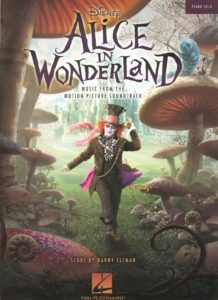 |
Danny Elfman Alice In Wonderland (Disney) |
| Danny Elfman – Big Fish – Jenny’s Theme | Big Fish | |
| Danny Elfman – Big Fish – Underwater | Underwater | |
| Danny Elfman – Corpse Bride – Victors Solo | The-Corpse-bride-Victors-piano-solo 1st page | |
| Danny Elfman Alice In Wonderland Piano Alice’s Theme | Danny Elfman Alice In Wonderland Piano Alice’s Theme 1st page | |
| Danny Elfman Corpse Bride official sheet music book |
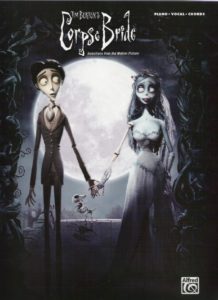 |
Danny Elfman Corpse Bride official sheet music book — 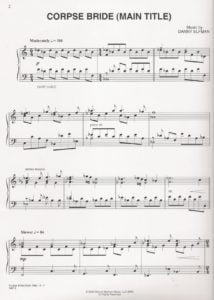 |
| Danny Elfman Corpse Bride The Piano Duet Solo Piano |
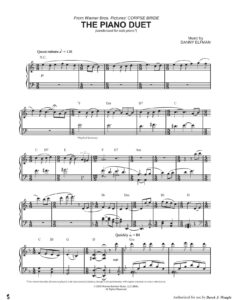 |
|
| Danny Elfman Love Theme from the film “BATMAN” |
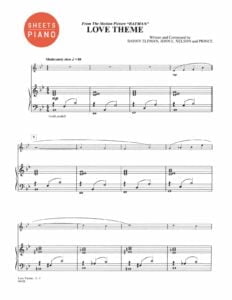 |
|
| Danny Elfman Teaches Music For Film Book |
 |
|
| Danny Elfman The Ice Dance Edward Scissorhands |
 |
|
| Danny Elfman The Movie and TV Music Of Danny Elfman Piano Solo |
 |
Danny Elfman The Movie and TV Music Of Danny Elfman Piano Solo content list |
| Danny Elfman The Nightmare Before Christmas (Tim Burton’s movie) Songbook incl. This is Halloween |
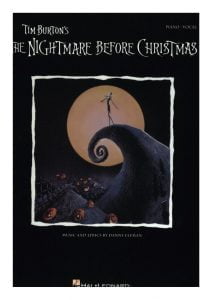 |
Danny Elfman – Tim Burton’s The Nightmare Before Christmas |
| Danny_Elfman Batman_(1989)_Main_Theme Piano Duet (Musescore file).mscz | Musescore File | |
| Dario Marianelli A Game Of Badminton (From Jane Eyre) |
 |
|
| Dario Marianelli Dawn From Pride And Prejudice (Sheet Music) |
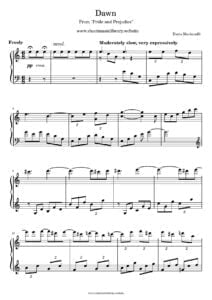 |
|
| Dario Marianelli Pride & Prejudice (Songbook) |
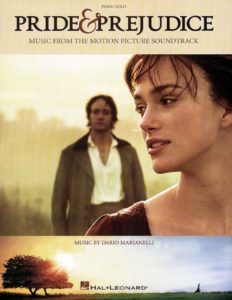 |
Dario Marianelli Pride & Prejudice (Songbook) |
| Dario Marianelli – Awaken from Jany Eyre |
 |
|
| Dario Marianelli – Dawn From Pride And Prejudice (Sheet Music) (Musescore File).mscz | ||
| Dario Marianelli – Garden Lullaby – The Secret Garden OST piano solo sheet music |
 |
|
| Dario Marianelli – My Edward And I – Piano sheet music from Jane Eyre |
 |
|
| Dario Marianelli – My Edward and I from Jane Eyre |
 |
|
| Dario Marianelli – One Of Them – Darkest Hour |
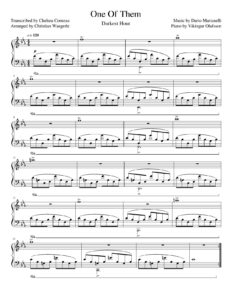 |
|
| Dark Meta Knight Theme (Piano Transcription) Game sheet music pdf |
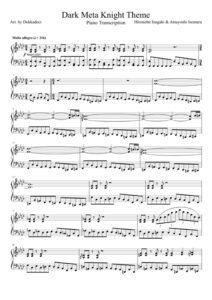 |
|
| Darn That Dream – Guitar Chords And Tabs – Jimmy Van Heusen & Eddie De Lange |
 |
|
| Darn That Dream – Guitar Chords And Tabs (Musescore File).mscz | ||
| Darn That Dream Vol 89 – Play Along with MP3 audio tracks |
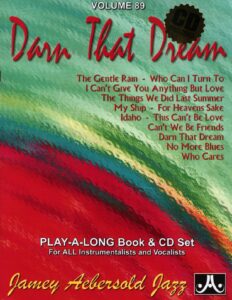 |
Vol 89 – Darn That Dream |
| Darren Hayes – Insatiable | ||
| Das Lied von der Erde (Gustav Mahler) | ||
| Dave Brubeck Jazz Impressions Of Japan Transcribed for piano solo By Howard Brubeck |
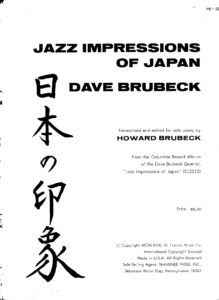 |
Dave Brubeck Jazz Impressions Of Japan Transcribed for piano solo By Howard Brubeck |
| Dave Brubeck Points On Jazz The Original Two Pianos Score Transcribed By Howard Brubeck |
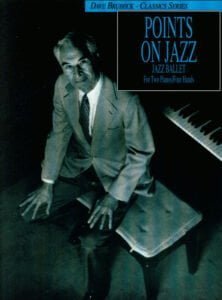 |
Dave Brubeck Points On Jazz The Original Two Pianos Score Transcribed By Howard Brubeck |
| Dave Brubeck Broadway Bossa Nova Jazz Play Along lead sheet |
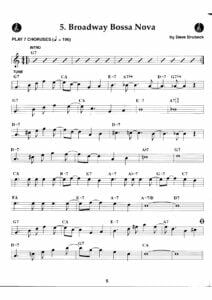 |
Dave Brubeck Broadway Bossa Nova |
| Dave Brubeck Vol 1 Transcriptions, original themes |
 |
Brubeck transcriptions |
| Dave Brubeck – Bossa Nova USA (piano solo) | Dave Brubeck – Bossa Nova USA (piano solo) | |
| Dave Brubeck – Points On Jazz – Piano Book for 2 pianos | Brubeck points on Jazz piano | |
| Dave Brubeck – Take Five Jazz Easy Piano | Dave Brubeck – Take Five Jazz Easy Piano | |
| Dave Brubeck – Take Five Jazz easy piano.mscz | ||
| Dave Brubeck – Take Five arranged for Guitar by Chet Atkins (Guitar sheet music with TABs). | Dave Brubeck – Take Five arranged for Guitar by Chet Atkins (Guitar sheet music with TABs). | |
| Dave Brubeck A Dave Brubeck Christmas |
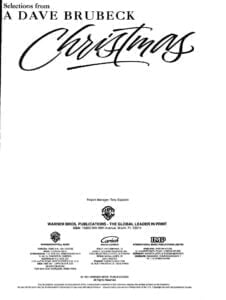 |
Dave Brubeck A Dave Brubeck Christmas |
| Dave Brubeck Blue Rondo à la Turk arr. Carsten Gerlitz Jazz Standard |
 |
|
| Dave Brubeck Deluxe Piano Album |
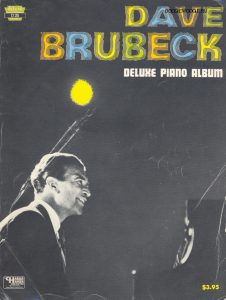 |
Dave Brubeck Deluxe Piano Album |
| Dave Brubeck Home At Last | Dave Brubeck – Home At Last | |
| Dave Brubeck Jazz Impressions Of New York |
 |
Dave Brubeck Jazz Impressions Of New York |
| Dave Brubeck Jazz Impressions Of The U.S.A |
 |
Brubeck impressions of the USA |
| Dave Brubeck Quiet As The Moon |
 |
Brubeck quiet as the moon |
| Dave Brubeck Take Five By Chet Atkins (Guitar TAB) |
 |
|
| Dave Brubeck Thank You (Dziekuje) |
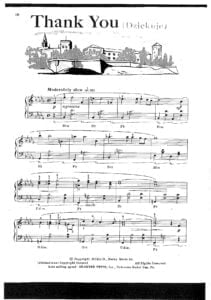 |
|
| Dave Brubeck The Duke Transcription of Improvised solo piano by Doug McKenz | Dave-Brubeck-The-Duke-Transcription 1st page | |
| Dave Brubeck Themes From Eurasia Transcriptions |
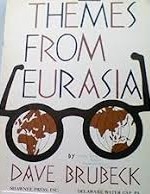 |
Dave Brubeck Themes From Eurasia Transcriptions |
| Dave Brubeck Time Out – Sheet Music Book |
 |
Dave Brubeck Time Out – Sheet Music Book |
| Dave Brubeck Time Out & Time Further Out |
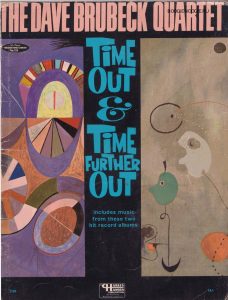 |
sheet music Dave Brubeck |
| Dave Celentano Flying Fingers Guitar Tablature (Wolf Marshall) |
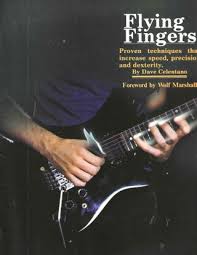 |
|
| Dave Celentano Power Rhythm Guitar Ron MiddleBrook |
 |
|
| Dave Frank Joy Of Improv Book One Beginning the Foundation |
 |
|
| Dave Grusin The Firm |
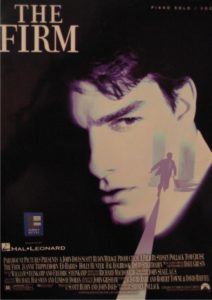 |
Dave Grusin The Firm |
| Dave Grusin – Falling In Love (Main Theme) | Dave Grusin – Falling In Love (Main Theme) | |
| Dave Grusin – Memphis Stomp (sheet music transcription) from The Firm |
 |
|
| Dave Grusin – Mitch & Abby |
 |
|
| Dave Grusin – Mountain Dance Piano Songbook Crossover Keyboardist |
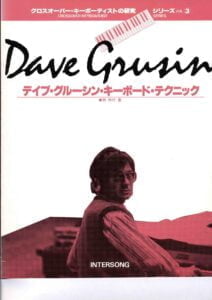 |
Dave Grusin – Mountain Dance Piano |
| Dave Grusin – Murder By Death |
 |
|
| Dave Grusin – On Golden Pond (Easy Piano Solo Arr.) | Dave Grusin – On Golden Pond (Easy Piano Solo Arr.) | |
| Dave Grusin – On Golden Pond (Easy Piano Solo Arr.) (Musescore File).mscz | ||
| Dave Grusin – Ray’s Blues (From The Firm) Jazz Arr. Sheet Music (Musescore File).mscz | ||
| Dave Grusin – Ray’s Blues (from The Firm) Jazz sheet music arr. |
 |
|
| Dave Grusin – Ray’s Blues (from The Firm) Original sheet music |
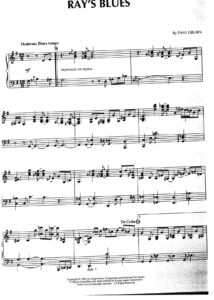 |
|
| Dave Grusin It Might Be You (Theme from Tootsie) |
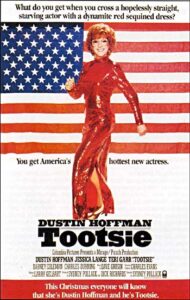 |
|
| Dave Grusin Memphis Stomp |
 |
|
| Dave Grusin Mulholland Falls | Dave Grusin Mulholland Falls 1st page | |
| Dave Grusin On Golden Pond Main Theme Easy Piano Solo |
 |
|
| Dave Grusin Random Hearts Main Theme Piano Solo from the film “Random Hearts” (album “Now Playing”) | Dave Grusin Random Hearts Main Theme Piano Solo | |
| Dave Grusin SongBook |
 |
Dave Grusin SongBook |
| Dave Grusin St Elsewhere (From The TV Series) |
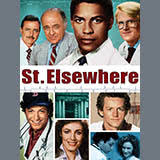 |
|
| Dave Grusin The Fabulous Baker Boys Songbook Full Score |
 |
Dave Grusin The Fabulous Baker Boys Songbook Full Score |
| Dave Grusin The Plan | Dave Grusin The Plan 1st page | |
| Dave Holland Looking Up jazz transcription | Dave Holland Looking Up jazz transcription | |
| Dave Matthews Band – Anthology Piano Vocal Guitar Chords |
 |
Dave Matthews Band – Anthology Piano Vocal Guitar Chords |
| Dave McKenna Come Easy, Go Easy Love (sheet music transcription) |
 |
|
| Dave Rubin Rockin The Blues Pdf + Audio MP3 Embedded Tracks Guitar With Tablature |
 |
|
| Dave Rubin Rockin The Blues Pdf + Audio Mp3 Embedded Tracks With Tablature |
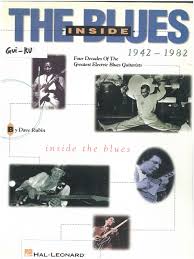 |
Dave Rubin Rockin The Blues Pdf + Audio Mp3 Embedded Tracks With Tablature |
| David Ari Leon La Nuit The Night Contre jour piano solo sheet music |
 |
|
| David Baerwald- Come What May (Piano solo sheet music) Moulin Rouge |
 |
|
| David Baker The Lydian Chromatic Concept (Improvisation technique) |
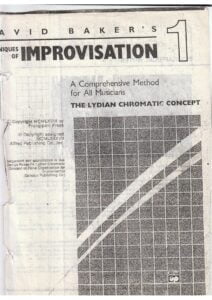 |
|
| David Baker – How To Play Bebop Volume 1 The bebop Scales |
 |
David Baker – How To Play Bebop Volume 1 The bebop Scales |
| David Baker – How To Play Bebop Volume 2 Learning the Bebop language |
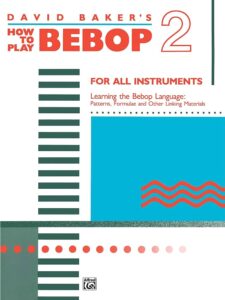 |
David Baker – How To Play Bebop Volume 2 Learning the Bebop language |
| David Baker – How To Play Bebop Volume 3 Techniques for Learning and utilizing Bebop tunes |
 |
David Baker – How To Play Bebop Volume 3 Techniques for Learning and utilizing Bebop tunes |
| David Baker Jazz Pedagogy A comprehensive method of Jazz education method for teacher and student |
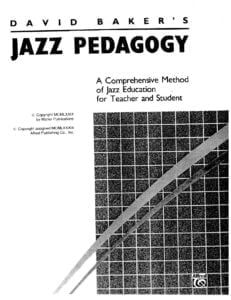 |
|
| David Bennett Cohen – Teaches Blues Piano |
 |
|
| David Benoit Professional Dreamer |
 |
Benoit professional dreamer |
| David Benoit – Anthology |
 |
David Benoit |
| David Benoit Anthology Vol 2 |
 |
 |
| David Berger Contemporary Jazz Duets For All Trebel Clef Instruments Vol. 1 |
 |
David Berger Contemporary Jazz Duets For All Trebel Clef Instruments Vol. 1 |
| David Bowie Play Guitar With (Guitar Tab) – [Book+Audio MP3] |
 |
David Bowie |
| David Bowie – Life On Mars | ||
| David Bowie – Lodger (sheet music songbook) |
 |
David Bowie – Lodger (sheet music songbook) |
| David Bowie – Play Acoustic Guitar with (Book+audio MP3) |
 |
Bowie David – Play acoustic guitar with [book+cd] |
| David Bowie – The Best Of David Bowie For Guitar & TAB notation |
 |
David Bowie – The Best Of David Bowie For Guitar & TAB notation |
| David Bowie Best Of Bowie |
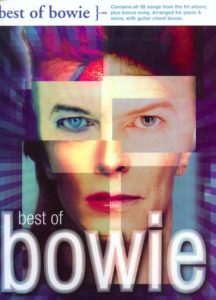 |
David Bowie Best Of Bowie |
| David Bowie Christiane F. Songbook Wir Kinder Vom Bahnhoff Zoo |
 |
David Bowie Christiane Songbook |
| David Bowie Labyrinth Songbook |
 |
David Bowie Labyrinth Songbook |
| David Bowie Life On Mars Piano Solo | David Bowie Life On Mars Piano Solo | |
| David Bowie Songbook – David Bowie, Best of sheet music Guitar TABS |
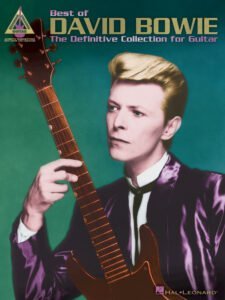 |
David Bowie Songbook – David Bowie, Best of sheet music Guitar TABS |
| David Bowie Songbook Piano The Songs of David Bowie |
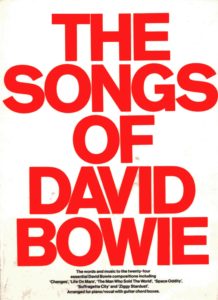 |
David Bowie Songbook Piano |
| David Bowie Starman, The Definitive Biography (book) |
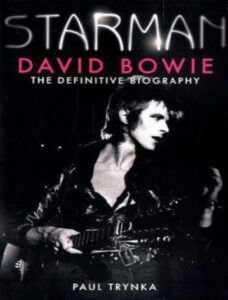 |
|
| David Carr Glover Jr The Old Witch Piano Solo (1956) |
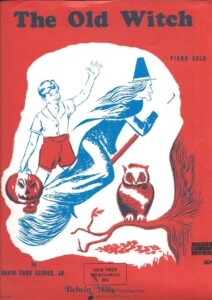 |
|
| David Cassidy Daydreamer (words and music by Terry Dempsey) |
 |
|
| David Cook – Always Be My Baby | ||
| David Foster – Winter Games – 1988 Winter Olympic Theme Piano Solo |
 |
|
| David Foster – Youll See | ||
| David Foster The Best Of David Foster 2nd Edition 29 Of His Best Piano Vocal Guitar |
 |
David Foster The Best Of David Foster 2nd Edition 29 Of His Best Piano Vocal Guitar |
| David Gates – If |
